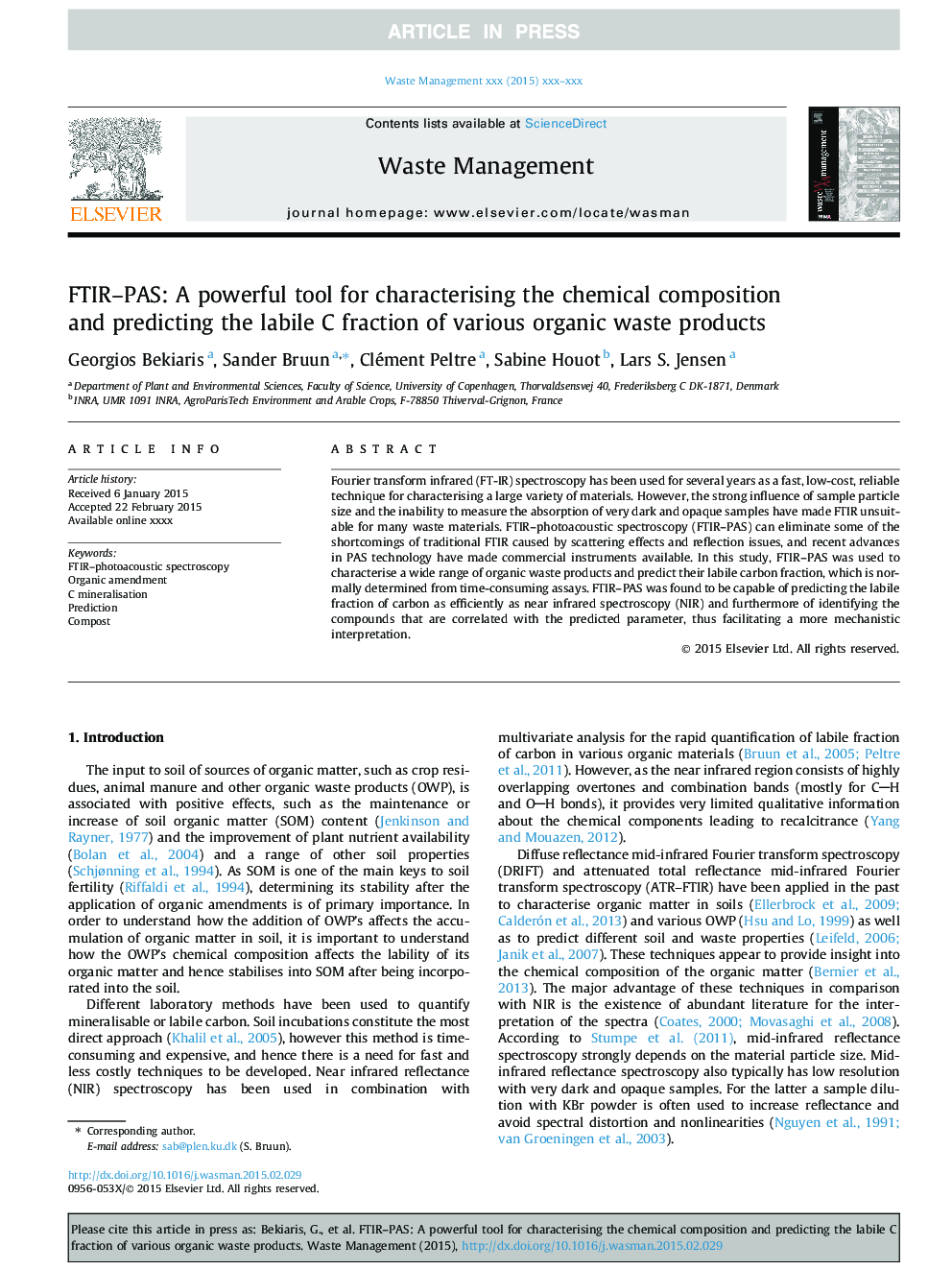| Article ID | Journal | Published Year | Pages | File Type |
|---|---|---|---|---|
| 6354668 | Waste Management | 2015 | 12 Pages |
Abstract
Fourier transform infrared (FT-IR) spectroscopy has been used for several years as a fast, low-cost, reliable technique for characterising a large variety of materials. However, the strong influence of sample particle size and the inability to measure the absorption of very dark and opaque samples have made FTIR unsuitable for many waste materials. FTIR-photoacoustic spectroscopy (FTIR-PAS) can eliminate some of the shortcomings of traditional FTIR caused by scattering effects and reflection issues, and recent advances in PAS technology have made commercial instruments available. In this study, FTIR-PAS was used to characterise a wide range of organic waste products and predict their labile carbon fraction, which is normally determined from time-consuming assays. FTIR-PAS was found to be capable of predicting the labile fraction of carbon as efficiently as near infrared spectroscopy (NIR) and furthermore of identifying the compounds that are correlated with the predicted parameter, thus facilitating a more mechanistic interpretation.
Related Topics
Physical Sciences and Engineering
Earth and Planetary Sciences
Geotechnical Engineering and Engineering Geology
Authors
Georgios Bekiaris, Sander Bruun, Clément Peltre, Sabine Houot, Lars S. Jensen,
